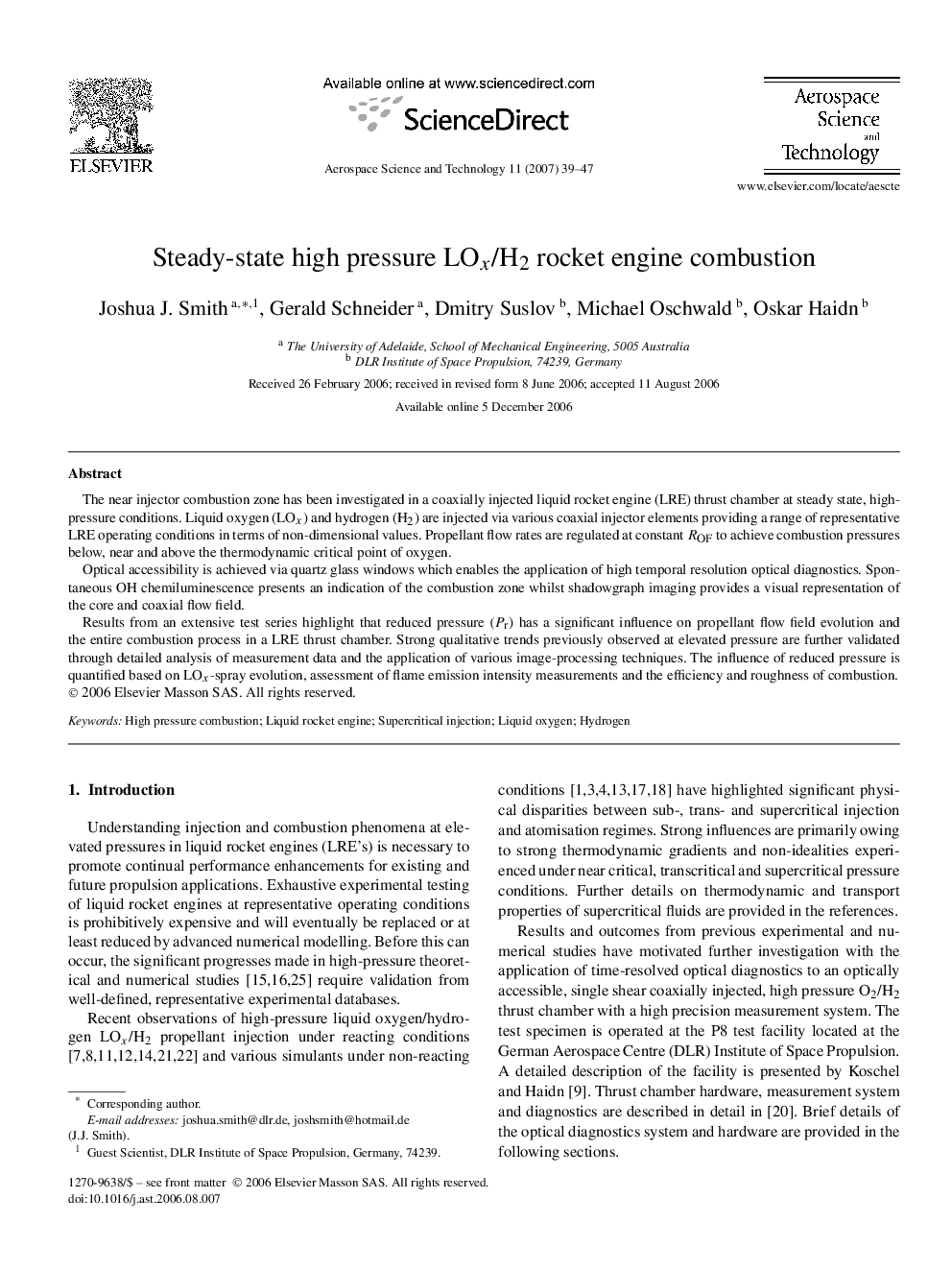| Article ID | Journal | Published Year | Pages | File Type |
|---|---|---|---|---|
| 1718836 | Aerospace Science and Technology | 2007 | 9 Pages |
The near injector combustion zone has been investigated in a coaxially injected liquid rocket engine (LRE) thrust chamber at steady state, high-pressure conditions. Liquid oxygen (LOx) and hydrogen (H2) are injected via various coaxial injector elements providing a range of representative LRE operating conditions in terms of non-dimensional values. Propellant flow rates are regulated at constant ROF to achieve combustion pressures below, near and above the thermodynamic critical point of oxygen.Optical accessibility is achieved via quartz glass windows which enables the application of high temporal resolution optical diagnostics. Spontaneous OH chemiluminescence presents an indication of the combustion zone whilst shadowgraph imaging provides a visual representation of the core and coaxial flow field.Results from an extensive test series highlight that reduced pressure (Pr) has a significant influence on propellant flow field evolution and the entire combustion process in a LRE thrust chamber. Strong qualitative trends previously observed at elevated pressure are further validated through detailed analysis of measurement data and the application of various image-processing techniques. The influence of reduced pressure is quantified based on LOx-spray evolution, assessment of flame emission intensity measurements and the efficiency and roughness of combustion.
